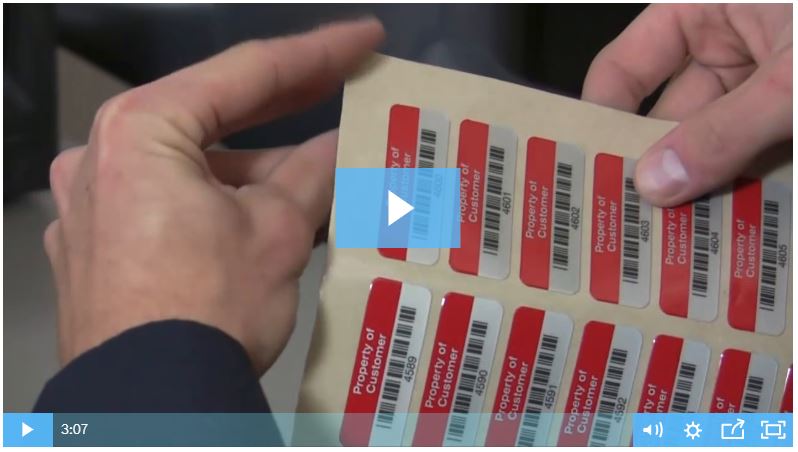Maximizing the life of your asset labels
Original Article by Camcode on June 10, 2019
Our contractor customers invest a lot in rugged durable asset labels and tags. Most contractors buy several types from thin stick on labels to heavy duty metal tags that get riveted onto machinery. Camcode, our barcode production partner, published an interesting video and article on the best ways to store and attach labels. The initial adhesive process has a big impact on the life of the label. With that in mind we wanted to share some of their ideas here:
From the Camcode Article:
Storage
Labels should be stored at 72°F (22°C) and 50% relative humidity. Storing labels at higher or lower temperatures may not provide the level of adhering performance you desire.
Surface Preparation
The surface the label stock will be applied to must be dry, dust free, and cleaned of all oil, grease and oxidized materials. Surfaces may be cleaned with an industrial cleaning solution (which your organization may already be using), or Isopropyl Alcohol (rubbing alcohol). Stronger solvents are required to remove process oils from bare materials. It is important to check the durability of the surface to be cleaned in an unseen area or on the backside with available solvent before cleaning in label area. Wipe dry with clean rags or absorbent paper towels. Commercial re-washed shop towels are not recommended.
Application
The label stock should be allowed to condition at room temperature (70°F to 100°F) before application is attempted. The surface must be at least 50°F. Below this temperature the adhesive becomes too firm to adhere readily.
Remove the liner from the label stock being careful not to touch the adhesive with your fingers. Do not allow the adhesive to become contaminated with dust or dirt.
For thin labels (.005″ and thinner):
Apply the label stock to the surface with firm thumb pressure starting from one side of the label and moving across the label to the opposite side to exclude air from behind the adhesive. When using a roller, select the softest roller possible and do not use excessive pressure. Using firm pressure, repeat the process two or three times to insure 100% contact of the adhesive to the surface. In this situation, “more is better”. More application contact provides a higher immediate bond. This allows the adhesive to “flow” into the cracks and crevices of a substrate thereby achieving more intimate contact between the adhesive and the surface.
For .012″ and thicker labels:
Apply the label stock to the surface with a rolling motion to exclude air from behind the adhesive. Use a soft roller or a clean cloth to firmly press the label stock down to insure 100% contact of the adhesive to the surface. In this situation, “more is better”. More roll down provides higher immediate bond. This allows the adhesive to “flow” into the cracks and crevices of a substrate thereby achieving more intimate contact between the adhesive and the surface.
Adhesives will meet maximum holding power after 72 hours.
The associated article was well written and useful. I recommend reading it. More importantly they also have a video on the website.
Read the full article here: Adhesive Label Instructions
See Tool Tracking Tips
Free and open access to articles, case studies and tool tracking best practices.
